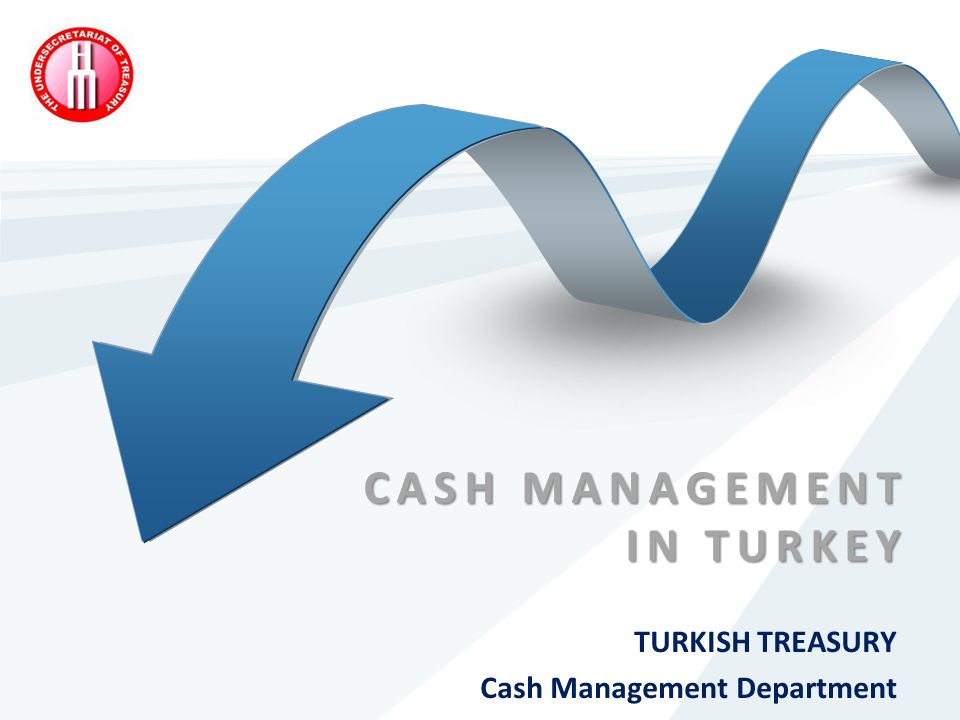
In the past, many IPOs were in the news due to unexpected highs and lows in prices. No content on the website shall be considered as a recommendation or solicitation for the purchase or sale of securities, futures, or other financial products. All information and data on the website are for reference only and no historical data shall be considered as the basis for predicting future trends. Ben has 8+ years in investment management and personnel financial planning and has become a Director of Financial Planning & Analysis for business and corporations. In Business from the University of South Carolina, a MBA from The Citadel’s Graduate School, and a Master of Accounting with duel concentrations in Taxation and Financial Planning Analysis from the University of North Carolina – Chapel Hill.
Green Shoes Look Funny – Bloomberg
Green Shoes Look Funny.
Posted: Wed, 20 Jan 2021 08:00:00 GMT [source]
A well-known real life example of Greenshoe option occurred in Facebook Inc. 2012 IPO. Underwriting syndicate, headed by Morgan Stanley agreed with Facebook, Inc. for purchasing 421 million shares priced at $38 for each share, less 1.1% fees for underwriting. However, around 484 million shares were sold by underwriter to clients which was 15% above initial allocation. In the IPO statement, the green shoe mechanism allows underwriters to short shares in the issuance of registered securities at the issue price. The scope of operation of the green shoe mechanism is different, but it usually does not exceed 15% of the original circulation.
Green-shoe option in syndicated financing transactions, Vietnamese law tight spots
Additionally, it protects the investor from a sharp decline in the share’s price. However, it is always preferable and prudent to avoid relying on just one factor and to carefully read the company’s offer document to learn more about it before investing. You can also consult Agarwal corporate to improve your stock market knowledge and get detailed investment strategies. The likelihood is that these investors will sell their shares after the listing to cash in on their unexpected profit, which could result in a decline in the share price.

This enables underwriters to stabilize fluctuating share prices by increasing or decreasing the supply according to initial public demand. In case, shares of Facebook had traded above the IPO price $38 shortly after listing, an greenshoe option to purchase 63 million shares from Facebook at a price of $38 will be exercised by underwriting syndicate. However, if shares are trading at higher price then underwriter will avoid repurchasing them. If underwriters are able to buy back all oversold shares at or below the issue price (in support of the share price), they will not be required to exercise any green shoe options. If they can buy back some of the shares at or below the issue price (as the stock price eventually rises and exceeds the issue price), the underwriter will exercise part of the green shoe option to make up for the remaining short position.
SEC Regulations on Overallotment
This type of option is the only SEC-sanctioned method for an underwriter to legally stabilize a new issue after the offering price has been determined. SEC introduced this option to enhance the efficiency and competitiveness of the IPO fundraising process. The green shoe mechanism ensures the stability and liquidity of the public offering.
To boost share demand and build investor confidence in the company’s potential, underwriters can purchase some company shares on the open market. In both situations, the underwriter has a 30-day window in which they can buy or sell the shares. The Securities and Exchange Commission (SEC) allows underwriters to engage in naked short sales in a share offering. Usually, underwriters use short selling when they anticipate a price fall, but the practice exposes them to price increases as a risk. In the United States, underwriters engage in short selling the offering and purchasing it in the aftermarket to stabilize prices. While selling short exerts downward pressure on the stock’s price, this tactic may facilitate a more stable offering that ultimately leads to a more successful stock offering.
For example, a company chose an investment bank (or consortium, or syndicate) as underwriter and publicly issued 1 million shares through the latter, the price of which was determined by agreement between the company and the buyer. When stocks begin to trade on the open market, the lead underwriter is responsible for assisting in ensuring that shares are traded at or above the issue price. This option allows for underwriters to sell up to 15% more shares in the first 30 days of the company’s stock issuance. Recently, Saudi Aramco went for an IPO, the performance on the exchange was so good that the share price went up by 10% of the offer price.

When the trading price of a public offering is lower than the issue price, the issue is called a “break”. This makes the stock will be considered by the customer to be unstable and unsatisfactory, which may further lead to the sell-off of shares and vacillate the purchase of stocks. Therefore, we can conclude by saying that the green shoe option is used for over allotment of the number of share in excess of the stated number in the IPO or any other share issue process. It is mostly stated in the underwriting contract and therefore gives the underwriters or the syndicate so formed the freedom of issuing greater number of shares if the demand for the same is high enough.
A greenshoe option, also known as an “over-allotment option,” gives underwriters the right to sell more shares than originally agreed on during a company’s IPO. These provisions can help underwriters meet higher-than-expected demand up to a certain percentage above the original share number. Some issuers prefer not to include greenshoe options in their underwriting agreements under certain circumstances, such as if the issuer wants to fund a specific project with a fixed amount and has no requirement for additional capital. But as the shares of Facebook decline below the IPO price soon after the trading begins, short position was covered by underwriter without exercising greenshoe option for stabilizing the price and avoiding any steep fall in price.
ISSUE OF COMMERCIAL PAPERS
This occurs mostly when a well-known company issues an IPO because many more investors are likely to be interested in investing in well-known companies, as opposed to lesser known companies. For example, when Facebook held its IPO in 2012, its shares were in high demand due to the company’s popularity and future potential. Oversubscription of the company’s shares allowed it to raise additional capital through overallotment to meet the demand. The term “greenshoe” arises from the Green Shoe Manufacturing Company (now called Stride Rite Corporation), founded in 1919. It was the first company to implement the greenshoe clause into their underwriting agreement. The legal name is “overallotment option” because, in addition to shares originally offered, additional shares are set aside for underwriters.
This is a problem as the underwriter needs to close the short position.The underwriter sold the shares at 10 and would have to buy them back at the higher price to deliver these shares to the investor (if it were to buy the shares on the market). This is where the Greenshoe option kicks in – this allows the underwriter to buy the shares at an issue price (in this example 10) from the issuer. The issuer receives additional proceeds; the underwriter will have sold shares at 10, buying the shares at 10. If the market price exceeds the offering price, underwriters can’t buy back those shares without incurring a loss. This is where the greenshoe option is useful, allowing underwriters to buy back shares at the offering price, thus protecting them their interests. The main purpose of the greenshoe option is to allow the underwriter and issuing company to receive more capital if the demand is higher than anticipated.
Examples of greenshoe option
For example, if an issuer offers 10 million shares in an IPO, the Green Shoe Option would allow the underwriter to purchase an additional 1.5 million shares. In the second instance, the opposite occurred; the stock underperformed, and prices fell. A recent example of a greenshoe option being used in an IPO occurred in July 2021 when Robinhood went public. During the popular trading platform’s IPO, it granted an over-allotment option to its underwriters, which included Goldman Sachs, J.P Morgan, Barclays, Citigroup, and Wells Fargo Securities. If the Investment Bank B exercises the call option, it will purchase shares from Company A’s shareholders at a pre-agreed price.

It’s important to note that the profits in this situation are limited as the shares purchased back are at the offer price. However, the use of the Green Shoe Option has also been criticized for artificially propping up the price of the shares and distorting the market’s price discovery mechanism. Critics argue that the option can create a false sense of demand for the shares, leading to an overvaluation of the company’s stock and potential losses for investors who buy the shares at inflated prices. When Facebook held its IPO in 2012, it sold 421 million Facebook shares at $38 to the underwriters, which included a group of investment banks who were tasked with ensuring that the stocks get sold and the capital raised sent to the company. The company went public at the end of July; at the end of August, Robinhood announced that its underwriters had partially exercised the greenshoe option, purchasing 4,354,194 shares of Class A common stock. This option alone increased Robinhood’s IPO proceeds by an additional $158.5 million.
The reverse greenshoe option gives the underwriter the right to sell the shares to the issuer at a later date. It is used to support the price when demand falls after the IPO, resulting in declining prices. The underwriter exercises the option by buying back the shares in the market and selling them to its issuer at a higher price. Companies use this technique to stabilize their stock prices when the demand for their shares is either increasing or decreasing. The specific details of the allotment are contained in the IPO underwriting agreement between the issuing company and the underwriters. The underwriters, usually investment banks or brokerage agencies, can exercise the overallotment option if the demand for the shares exceeds the expected demand and the sale price is significantly higher than the offer price.
The underwriter studied the market and competition, conducted overall research, and reached a share price of INR 30 per share for the 50,000 shares the company plans to list in the market. On the other hand, only certain investors typically have access to the IPO market, and a greenshoe option doesn’t necessarily change that. Greenshoe options are commonplace in IPOs in the U.S. today, and, as you’ll learn, you can easily find examples of them being used. The name “greenshoe option” comes from the IPO of the Green Shoe Manufacturing Company. When the company went public in 1963, it was the first to allow for an over-allotment option, now informally known as the greenshoe option. Bankers want to prevent a loss of trading value in the first few days after the IPO.
- Greenshoe option refers to a special option available to underwriters in context of IPO (Initial Public Offering) under which they can issue additional equity shares up to a specific limit.
- However, around 484 million shares were sold by underwriter to clients which was 15% above initial allocation.
- This presentation is for informational and educational use only and is not a recommendation or endorsement of any particular investment or investment strategy.
- Underwriting syndicate, headed by Morgan Stanley agreed with Facebook, Inc. for purchasing 421 million shares priced at $38 for each share, less 1.1% fees for underwriting.
- By reducing the supply of available shares, the underwriters can boost the price of the shares.
To stabilize prices in this scenario, underwriters exercise their option and buy back shares at the offering price, returning those shares to the lender (issuer). When the issue succeeds, the demand for shares leads to an increase in the price of the stock and remains above the price of the issue. If underwriters close their positions by buying shares on the open market, they will buy stocks at a higher price than they did when they shorted them, thus suffering losses. The green shoe mechanism can play a role in this case, in which the company gives underwriters the right to overbuy at the beginning, allowing them to overbuy up to 15 per cent of the shares at the original issue price. By exercising the green shoe option, the underwriter can close the position by buying the stock at the price of short selling, thus avoiding the loss.
A greenshoe option provides additional price stability to a security issue because the underwriter can increase supply and smooth out price fluctuations. It is the only type of price stabilization measure permitted by the Securities and Exchange Commission (SEC). If underwriters are unable to buy back any oversold parts at or below the issue price because the stock immediately what is green shoe option with example rises and stops, they will fully assume the 15 per cent short position and exercise 100 per cent of the green shoe option. The reverse option is a strategic move made by the underwriter to sell any surplus shares back to the issuing company. This tactic is typically employed in situations where demand for the shares has declined or when the market price has become unstable.
Best Rocker Bottom Shoes Of 2023 Per Podiatrist Guidelines … – mindbodygreen
Best Rocker Bottom Shoes Of 2023 Per Podiatrist Guidelines ….
Posted: Tue, 04 Jul 2023 07:00:00 GMT [source]
A greenshoe option allows the group of investment banks that underwrite an initial public offering (IPO) to buy and offer for sale 15% more shares at the same offering price than the issuing company originally planned to sell. The clause is activated if demand for shares is more enthusiastic than anticipated and the stock is trading in the secondary market above the offering price. If demand is weak, and the stock price falls below the offering price, the syndicate doesn’t exercise its option for more shares. This contract provision, which may be acted on for up to 30 days after the IPO, gets its name from the Green Shoe Company, which was the first to agree to sell extra shares when it went public in 1960.
